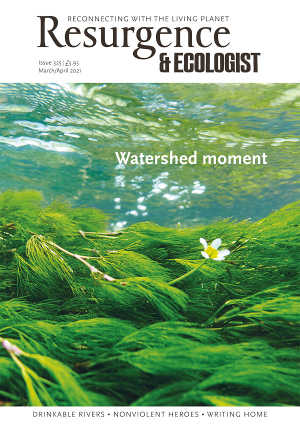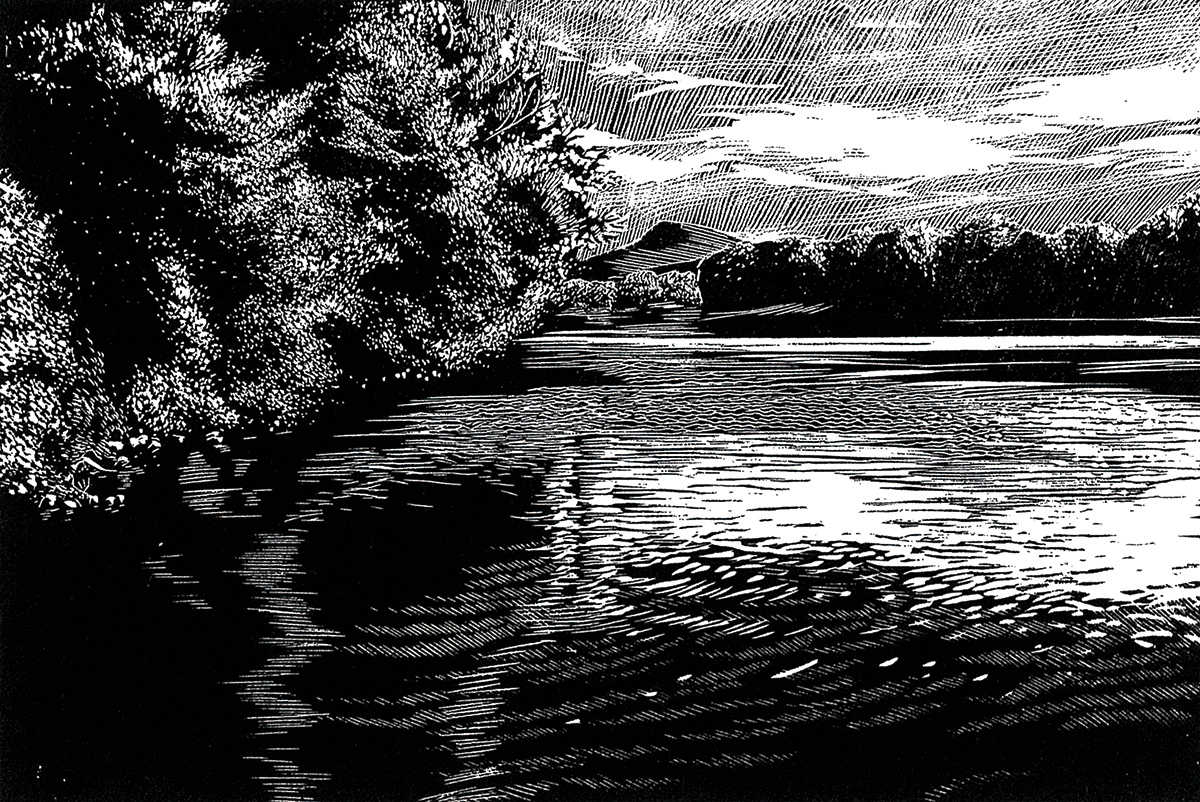Britain and Ireland hold over 4,000 miles of watercourse, depending on how you define a river. From source to babbling brook, down through flood plain to the sea, our rivers are the circulatory system of our landscape, shaping our environment and being shaped in turn. They are part of the miraculous global cycle of water.
However, the untamed and changing nature of our rivers has been manipulated by people over many centuries, from the time that water was used to transport the Stonehenge sarsens over 6,000 years ago. Rivers clean, drain, wash and dilute; they transport us, create energy and give us water to irrigate crops. Rivers soothe us, inspire us and give us space to play. As a result, as with other wildlife habitats, there are no rivers in Britain and Ireland that can be claimed as completely natural or wild.
Look more closely at your nearest watercourse, and you will discover that beyond any notion of being tamed, our rivers have been sick for some time. The ever-increasing intensification of our farming systems means that some rivers are no more than large industrial drains, while others are choked with sediment and nutrients. Stocks of salmon and trout are in sharp decline. Water Framework Directive data show that 65.7% of water bodies in Scotland, 52.8% in the Republic of Ireland, 40% in Wales, 31% in Northern Ireland and just 16% of water bodies in England were in good ecological status in 2018 and 2019.
We are getting something very wrong with our rivers, and yet they can still bite back. As storm incidence increases with climate change, and water rushes down through denuded catchments that cannot soak it up, society is struggling with flood risk and major flood events. The same voices that want to dredge, engineer and control our rivers will only get louder in response.
As an environmentalist, a folklorist and a storyteller, I am curious about the stories of our rivers. How do our folk tales reflect society’s historical relationship with rivers? Could they help inspire our actions to improve matters now?
Dangerous waters
Throughout these islands, rivers have long been given names and assumed characters, and sometimes they have been deified: think of Old Father Thames, or Sabrina/Hafren (the River Severn). This reflects the living nature of rivers, but also their power – in the rush of water or in the still deep pools, rivers can kill. Selkies in Scotland, morgens in Wales, and grindylows in England are supernatural creatures from our folklore ever ready to lure unsuspecting humans into deep water.
A favourite character of mine is Jenny Greenteeth, a water hag from north-west England whose spindly fingers grab careless children from the riverbank and drag them to a watery death. It’s easy to imagine Jenny in a modern river, caked with sewage fungus, her eyes crawling with bloodworms, her teeth slimy with weed: pollution makes her even scarier. But in the days when a trip to the river was part of the daily routine, to collect water and to wash, perhaps these stories were a practical warning too.
Other river monsters are more subtle. The river Dart in south Devon has a piskie character that calls curious farm workers with the plaintive cry, “Jan Coo! Jan Coo!” This story gave rise to the rhyme: “River Dart, river Dart, every year you claim a heart,” which sadly still seems to hold true to this day.
Underwater mystery
River ecosystems are largely hidden from human eyes, and in the old days people who understood the magic of British rivers were wise indeed. Celtic mythology abounds with tales of the sacred salmon, a mysterious beast that leaps and travels against the flow, swims in fresh and salt water, and covers great distances to return to the place of its birth. The salmon often appears in our folklore together with the hazel tree, also a mercurial bringer of wisdom.
An early story of the Irish hero Fionn mac Cumhaill tells of a salmon that ate nine hazelnuts from the trees overhanging the Well of Wisdom on the river Boyne. The salmon acquired all the wisdom in the world, and after many years it was caught by the old druid Finegas, who knew that if he ate the flesh of the fish he would gain its wisdom. Finegas told his student Fionn to watch over the fish as it sizzled on the fire. A drop of hot fat from the salmon’s skin fell onto Fionn’s thumb and, unthinking, he put it to his mouth, so it was Fionn who gained the wisdom. After that time, all Fionn had to do when he needed wisdom was to bite his own thumb.
There’s a powerful story from County Durham concerning the young John Lambton, a wilful fellow who instead of attending church one morning decided to go fishing in the river Wear. An old man warned him that no good would come of his actions, but John stayed by the river all morning, catching nothing until the very last minute, when he fished out a small, salamander-like creature with nine holes on each side of its head. “This must be the Devil himself!” John Lambton boasted, but after a while, bored and chided again by the old man, he disposed of the creature down an old well.
Years went by, and John went off to the Crusades. It was only when livestock started to disappear that the locals realised something was wrong. The worm, now grown, was so huge that it had coiled itself around a local hill seven times, and it set about terrorising the neighbourhood, eating sheep, cattle and children. John Lambton, returned from the crusades, battled with the great beast and killed it, with the aid of witchcraft. However, he didn’t follow all the advice he’d been given and this resulted in a family curse that lasted through the generations.
It’s a story about the consequences of irresponsible actions, and of bringing monsters to light but not dealing with them properly. With respect to the state of our rivers, and the consequences of their poor management, no further interpretation is needed.
Folklore and folk tales about the environment can give us useful pause for thought, and these river stories are no exception. Will we be wise enough to know when to respect rivers, to give something back and put right the damage we have done, and to leave more space for rivers to become wilder again? Or will we continue, blind to our impacts and our pollutions, to push things too far?








